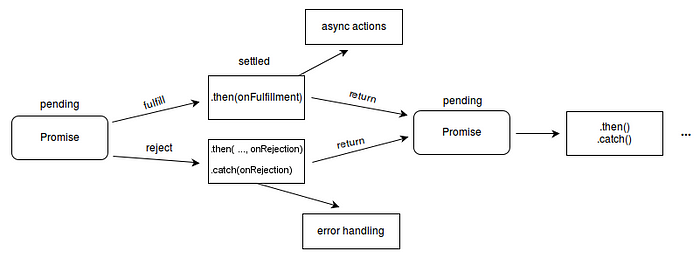Member-only story
JavaScript Promise: Know When To Use It and How It Works
A promise isn’t an older version of async/await
Many developers who use JavaScript daily love to use the async/await syntax. It is not only easy to learn and use, but it can also make your code more readable and understandable. However, did you know that sometimes you need to use the Promise syntax rather than the async/await syntax?
In this article, I’ll explain how Promise works under the hood and when you should use it.
Prerequisite
You should already know the basic usage of Promise.
How Promise Works Behind the Scenes

I think many of you already know what Promise’s stages are. Once you finish whatever you do inside a Promise constructor, it returns another Promise and waits for what you wrote in the constructor to be done. This will be fulfilled or rejected.
Let’s take a look at a simple example:
Can you guess the result?
It seems so obvious that 1 would be printed at first. Since setTimeout is an asynchronous function, you think, “It’ll be executed at some point later.” Then, you encounter Promise. “Hmm, a Promise is also an asynchronous thing, so I guess this would be executed after setTimeout because I met setTimeout first.”
So you’re pretty sure the answer is 1-2-3-4 or 1-3-2-4… which is wrong.
Many developers I’ve met have known that Promise is considered asynchronous, but they didn’t really know why it’s considered asynchronous.
I’ll put forth a few statements. See how many of them you feel are correct:
- JavaScript is a single-threaded language. (O/X)
- JavaScript has multiple task queues. (O/X)

